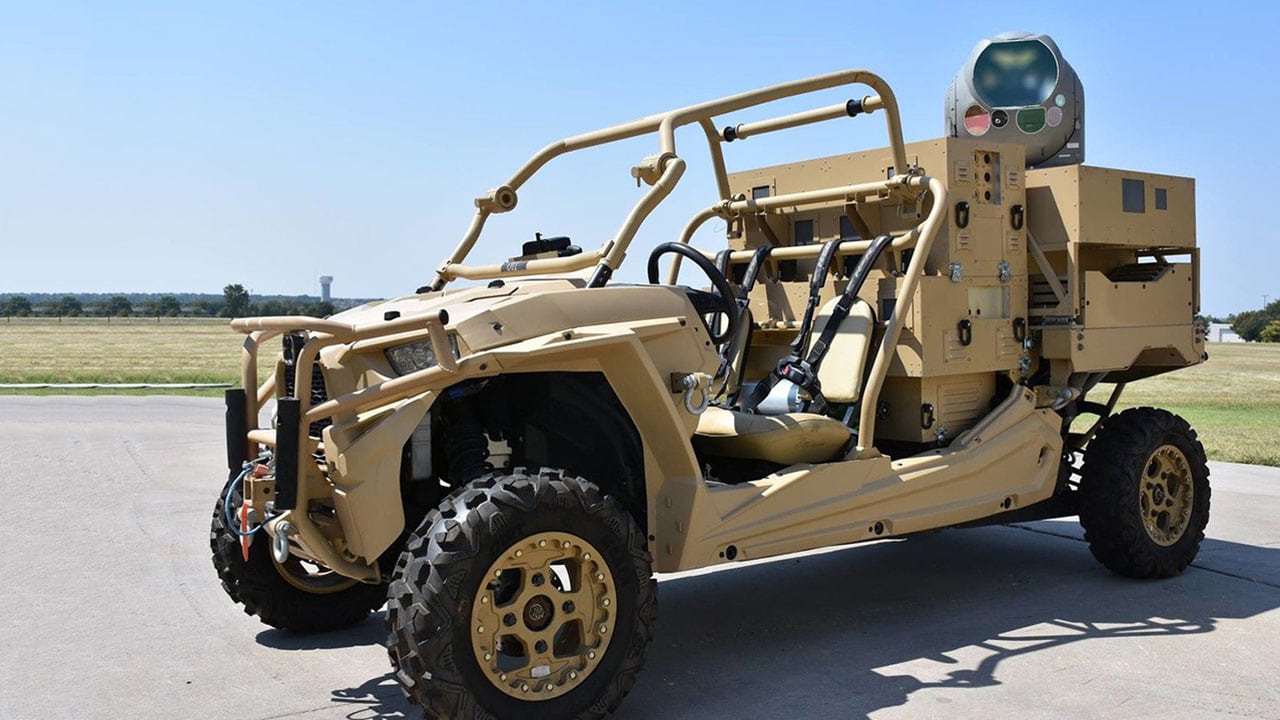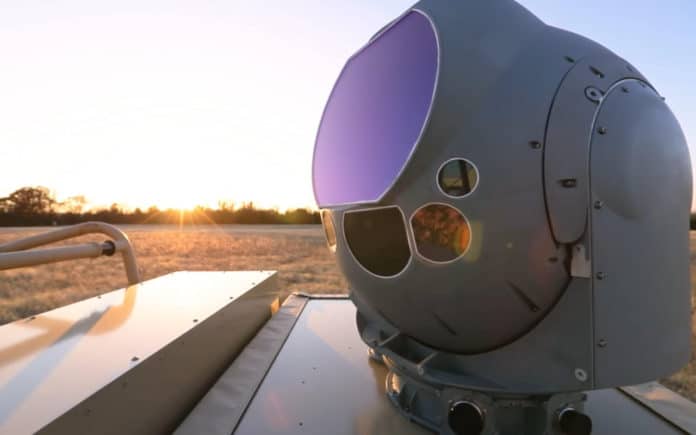For armies like the United States, drones are one of the biggest threats today. And they still don’t have an effective system to end them.
Now, the US Air Force is launching its first laser gun against drones in its arsenal. Made by Raytheon, it can detect and shoot a drone with a laser beam in seconds.
When others use trained hawks, the US Air Force uses laser beams. The reason for the drones that the whole world is beginning to take seriously is their ability to not only violate privacy by recording and taking photographs in unauthorized places, but they can be a major threat in a war zone.
Raytheon, one of the largest military defense contractor companies in the world, handed over to the U.S. Air Force the first high-energy laser counter-unmanned aerial system earlier this month. About one year has passed from the moment the technology was presented to its implementation in the form of a finished weapon system.

Raytheon laser weapon system is installed on a small all-terrain vehicle. The system uses an electro-optical/infrared sensor, to detect, identify and track rogue drones. After identifying the hostile drones, it engages the threat, neutralizing the UAS in a matter of seconds.
According to the company, the system can receive power from a standard 220-volt outlet and can deliver intelligence, surveillance and reconnaissance capability and also make dozens of laser shots per charge. In addition, the laser weapon system can be paired with a generator in order to provide a nearly infinite number of shots.
“Five years ago, few people worried about the drone threat,” said Roy Azevedo, president of Raytheon Space and Airborne Systems. “Now, we hear about attacks or incursions all the time. Our customers saw this coming and asked us to develop a ready-now counter-UAS capability. We did just that by going from the drawing board to delivery in less than 24 months.”
The system will be deployed overseas as part of a year-long Air Force experiment to train operators and test how effective it is in real-world conditions.
